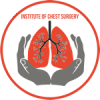A diaphragmatic hernia or eventration is a condition where there is a weakness or defect in the diaphragm, the muscle that separates the chest cavity from the abdominal cavity. This can lead to organs from the abdomen, such as the stomach, liver, or intestines, protruding into the chest cavity. Surgical repair is often necessary to correct the issue and restore normal diaphragmatic function. However, patients undergoing such procedures are understandably concerned about the recovery process. In this article, we will explore the typical recovery period after surgical repair of a diaphragmatic hernia or eventration, factors influencing the duration, and essential tips for a smooth recuperation.
Understanding Diaphragmatic Hernia and Eventration Surgery
Diaphragmatic hernias and eventrations can be congenital (present at birth) or acquired due to trauma or muscle weakening over time. Both conditions require surgical intervention to bring the abdominal organs back into their proper position and reinforce the diaphragm.
The surgical repair typically involves making an incision in the abdomen or chest, depending on the location of the hernia or eventration. The organs are then gently returned to the abdominal cavity, and the diaphragm is repaired or reinforced using sutures or mesh. The duration of the surgery can vary depending on the complexity and extent of the hernia or eventration.
Factors Influencing the Recovery Period
Several factors can influence the recovery period after surgical repair of a diaphragmatic hernia or eventration:
- Type and Extent of the Hernia or Eventration: The size and severity of the diaphragmatic hernia or eventration can impact the complexity of the surgical repair and consequently affect the recovery time. Larger hernias or eventrations may require more extensive surgery and may take longer to heal.
- Patient’s Overall Health: The patient’s overall health and medical history play a crucial role in determining the recovery period. Individuals with pre-existing medical conditions may take longer to recover than those in good health.
- Surgical Approach: The choice of surgical approach, whether open surgery or minimally invasive techniques such as laparoscopy, can affect recovery time. Minimally invasive procedures often lead to shorter recovery periods, reduced postoperative pain, and smaller scars.
- Postoperative Care: Adherence to postoperative care instructions is vital for a successful recovery. Following the surgeon’s guidelines regarding wound care, activity restrictions, and medications can significantly impact the healing process.
The Typical Recovery Period
The recovery period following surgical repair of a diaphragmatic hernia or eventration can vary from patient to patient. In general, patients can expect to spend several days in the hospital after the procedure for observation and monitoring. During this time, medical professionals will ensure that the surgical site heals properly, and there are no signs of complications.
Week 1-2
The initial phase of recovery focuses on wound healing and managing postoperative pain. Patients may experience discomfort and limited mobility during this time. It’s crucial to follow the surgeon’s recommendations for pain management and gradually increase activity levels as advised.
Week 2-4
By the second to fourth week, most patients should experience reduced pain and improved mobility. However, it’s essential to avoid lifting heavy objects or engaging in vigorous physical activities until cleared by the surgeon.
Week 4-6
As the fourth to sixth week approaches, patients may begin to feel more like their usual selves. Many can return to light work duties and resume driving, though strenuous activities should still be avoided.
Months 2-6
During this period, patients can gradually increase their physical activity and may resume exercises, following the surgeon’s approval. However, patients should be cautious and listen to their bodies to avoid overexertion.
Long-Term Recovery and Follow-Up
Recovery from diaphragmatic hernia or eventration surgery is an ongoing process, and the long-term outcome depends on various factors. Regular follow-up appointments with the surgeon are essential to monitor the healing progress and address any concerns.
It’s essential to communicate openly with the healthcare team and report any unusual symptoms, such as persistent pain, difficulty breathing, or recurrent hernia symptoms. These could indicate potential complications that require prompt medical attention.
Tips for a Smooth Recovery
- Follow Medical Advice: Adhere to the surgeon’s postoperative instructions diligently. This includes wound care, medications, and activity restrictions.
- Take It Slow: Avoid rushing back into regular activities and give your body time to heal properly.
- Healthy Diet: Maintain a nutritious diet to support the healing process and boost your immune system.
- Stay Hydrated: Drink plenty of water to aid in healing and prevent complications like constipation.
- Quit Smoking: If you smoke, consider quitting, as smoking can hinder the healing process and increase the risk of complications.
- Seek Support: Reach out to friends, family, or support groups for emotional support during the recovery period.
Conclusion
The recovery period after surgical repair of a diaphragmatic hernia or eventration can vary depending on several factors. While initial recovery may take several weeks, complete healing and the ability to resume all normal activities may take several months. It’s crucial to follow the surgeon’s instructions and attend regular follow-up appointments to ensure a smooth recovery and long-term well-being. By taking the necessary precautions and being patient with the healing process, individuals can look forward to restored health and improved quality of life after diaphragmatic hernia or eventration surgery.






